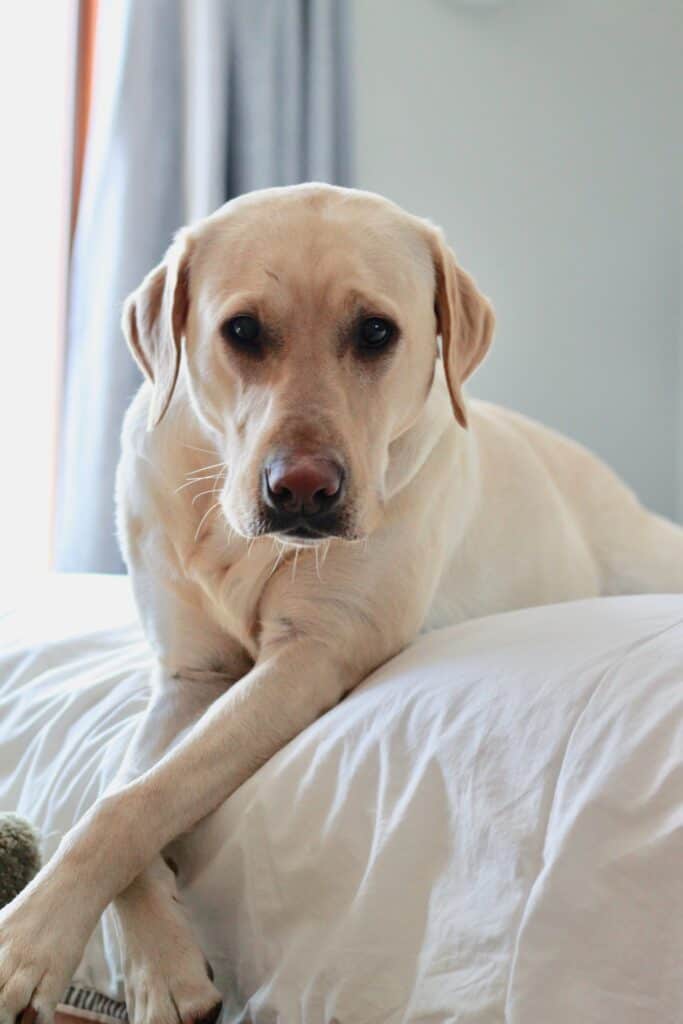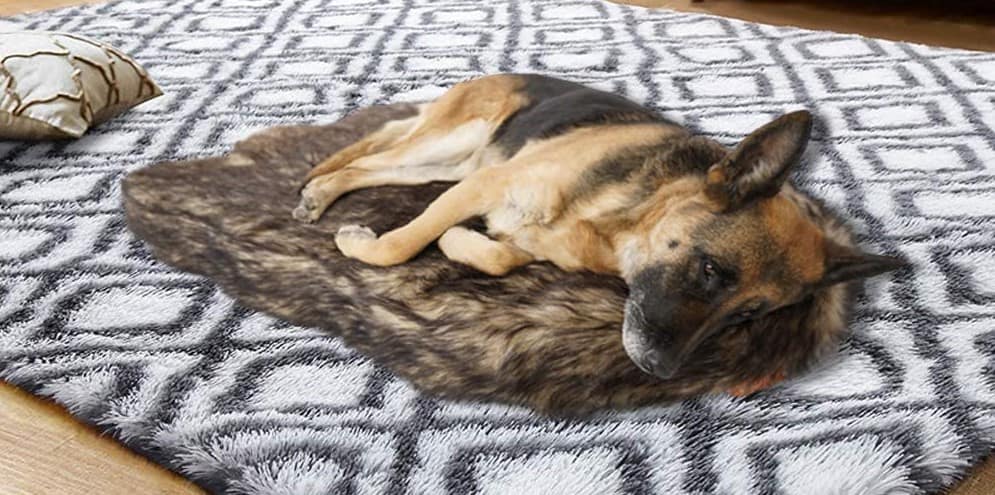Just like us, our dogs can have allergies. They can be allergic to house mites, grass, cottonwood, and sheep wool, among other things. Look for hypoallergenic dog beds that contain allergy-free materials for itch-free night sleep.
One of the reasons for allergies in dogs can be unfit bedding. That’s right, especially if not cleaned and regularly replaced, the bed can trigger the most menacing symptoms of allergies like sneezing and constant itching.
If your dog suffers from allergies, you are familiar with the most common signs:
- Intense scratching
- Watery eyes
- Inflamed skin
- Sneezing
- Licking of the paws
Why Some Beds Provoke Allergies in Dogs
The bed is a vast source of dust mites or just a general harbor for different household allergens. Luckily, choosing the right type of hypoallergenic dog bed can help with alleviating allergy-related symptoms.
What most commercially sold dog beds are filled with is latex or synthetic memory foam. Both materials don’t support the growth of fungus or dust mites. However, they can accumulate a significant amount of dead skin cells from the dog’s skin fast.
Clustered pet skin cells create perfect conditions for housing dust mites and molds. The dirtier and older the bed becomes, the higher the chances of developing dust mites colonies get. Moisture can additionally promote microorganism growth.
Rarely the problem can be the material itself. During the process of creating synthetic fabrics, manufacturers use different types of chemicals. Dogs can be allergic to them. One chemical of such is a chemical flame retardant found in synthetic fiber.
At-Home Treatments For Dogs With Allergies

- Wash your dog regularly with anti-itch dog shampoo.
- Provide food rich in nutrients like Omega3 and Omega6 to support skin health.
- Aloe Vera and other creams help soothe their skin.
- Regular vacuuming to get rid of dust mites present in your home.
- Hypoallergenic dog beds for a restful night’s sleep.
Properties of Hypoallergenic Beds
Fabric comprised of more natural ingredients such as hemp, 100 percent cotton, or tightly woven microfiber is less likely to trigger dogs’ allergies.
So the first thing that most hypoallergenic dog beds have in common is the choice of more natural fabric.
The filling is denser and makes it hard for the mites to penetrate and colonize inside. Foam low in density allows them to reside in, along with other allergens.
A cover with a tight weave will make it hard for the microorganism to penetrate the inside of the bed. Tightly woven microfiber serves as a form of a barrier blocking the dust mites’ passage and dust mites waste from the outside.
Another pro of this type of bed cover is that it’s pretty easy to clean. Regular washing provides a pathogen-free environment. Although bacteria and yeast aren’t responsible for the allergies, they can cause secondary infections on the skin that lost their integrity due to hypersensitivity.
Related read : How to clean a dog bed.
What to Look for in a Hypoallergenic Bed
The right choice of bedding is a material that’s easy to clean, chemical-free, and doesn’t let the microorganisms, dust, and dander penetrate the cover.
Since dogs aren’t washed each night before going to bed, it’s normal even for hypoallergenic dog beds to collect some allergens over time. That’s why we recommend that owners should purchase new bedding once in a while, like once a year.
For the sake of hygiene, try a removable bed cover. If you can machine-wash and dry the cover weekly, you won’t need to buy new beds ever so often.
To Sum Up
Hypoallergenic dog beds provide the best home solution not only for your allergic dog but also for your family. They have materials that keep triggering particles away. They are waterproof and with dense filling, and although more expensive than regular beds, they are what your fur baby deserves.
Having said that, we recommend you always check with your vet for a regular flea treatment routine to reduce the risk for infection.
Recent Posts
As a dog owner, you want to ensure that you take proper care of your furry companion. A common question that many pet owners have is, "Can I walk my dog 30 minutes after eating?" Understanding the...
Have you ever considered getting an elevated dog bed for your furry friend, but wondered if it's worth the investment? If so, you're not alone. As dog owners, we all want to provide the best care for...

